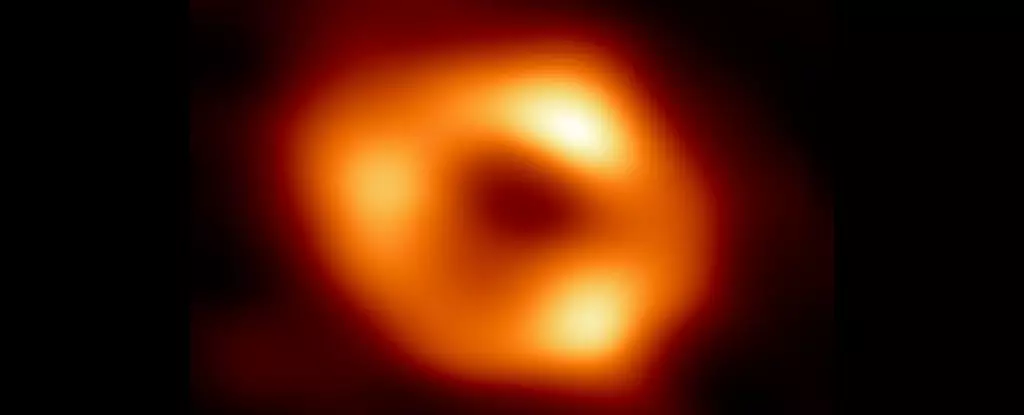The release of the first image of Sagittarius A* (Sgr A*), the supermassive black hole at the center of our Milky Way galaxy, was a monumental scientific achievement. However, new analyses from researchers at the National Astronomical Observatory of Japan (NAOJ) suggest that our understanding of the accretion disk surrounding this black hole may need significant revision. The findings raise intriguing questions about the nature of black holes and challenge our perception of the cosmic phenomena we’ve come to study.
In April 2022, the Event Horizon Telescope (EHT) team unveiled an image that depicted Sgr A* as a glowing ring encircling a dark center—an iconic representation of the astronomical behemoth. While this image was groundbreaking, the NAOJ’s latest re-analysis points toward a more complex reality: an elongated accretion disk rather than the previously assumed circular shape. Using the same data, NAOJ scientists applied alternative analytical techniques, revealing that the configuration of matter around the black hole could differ substantially from earlier interpretations.
Miyoshi Mikato, an astronomer, articulated this discrepancy, attributing the rounded appearance to potential artifacts from the original imaging process. The implication of this distinction is significant for astrophysical modeling, as it not only influences our visual representation of Sgr A* but also suggests nuanced dynamics in the surrounding material’s behavior.
The accretion disk of a black hole is a tumultuous environment, filled with gas and dust spiraling toward oblivion. As this material traverses the disk, gravitational forces and magnetic interactions generate immense heat, causing it to emit radiation detectable across the electromagnetic spectrum. The new analysis indicates that the accretion disk may exhibit an east-west elongation, with the eastern section being notably brighter than its western counterpart. This suggests that the disk is rotating at a staggering 60 percent of the speed of light, a revelation that accentuates the intricate dance of gravity, matter, and energy in the cosmos.
Such an elliptical shape offers hints about the mechanics governing the disk’s material distribution and motion. The factors influencing the disk’s shape derive from a complex interplay between the black hole’s spin, the material’s angular momentum, and how quickly matter is being drawn into the black hole. Therefore, this reconfiguration could fundamentally alter our conceptual landscape regarding the mechanics of black hole accretion.
The journey from raw observational data to interpretable images is fraught with challenges, especially when dealing with a phenomenon as extreme as a black hole. As noted by Mikato, no imaging system achieves perfect accuracy—a reality exemplified in the case of the EHT observations, where gaps in interferometric data can obscure truth. The EHT utilized various computational methods to create a “complete” image, which can inadvertently lead to distortions or artifacts.
In this light, the NAOJ team employed an innovative mapping approach that rectified many of these data gaps. Their method unveiled an elongated structure, reinforcing the idea that the nature of the surrounding material may be more dynamic than previously thought. This process of reinventing the analytical wheel serves as a reminder of the iterative nature of scientific inquiry, showcasing how new techniques can lead to better understanding and insights.
The implications of the NAOJ’s findings extend beyond a mere alteration in visual representation; they point to broader challenges that scientists face when attempting to study black holes and their environments. As the EHT consortium works to enhance its imaging capabilities through more sophisticated optics and methodologies, we can expect more precise reconstructions of Sgr A* in the future.
Moreover, a thorough examination of the accretion disk’s characteristics could shed light on the foundational workings of black holes. These discoveries could, in turn, provide valuable context for studying other celestial phenomena, such as active galactic nuclei and the interplay between galaxies and their central supermassive black holes.
As the astrophysical community confronts the complexities of Sgr A*, the ongoing refinement of our tools and models serves as a testament to the ever-evolving nature of science. The reanalysis from the NAOJ is a pivotal step towards a clearer, more definitive understanding of the enigmatic and awe-inspiring forces that govern our universe.

